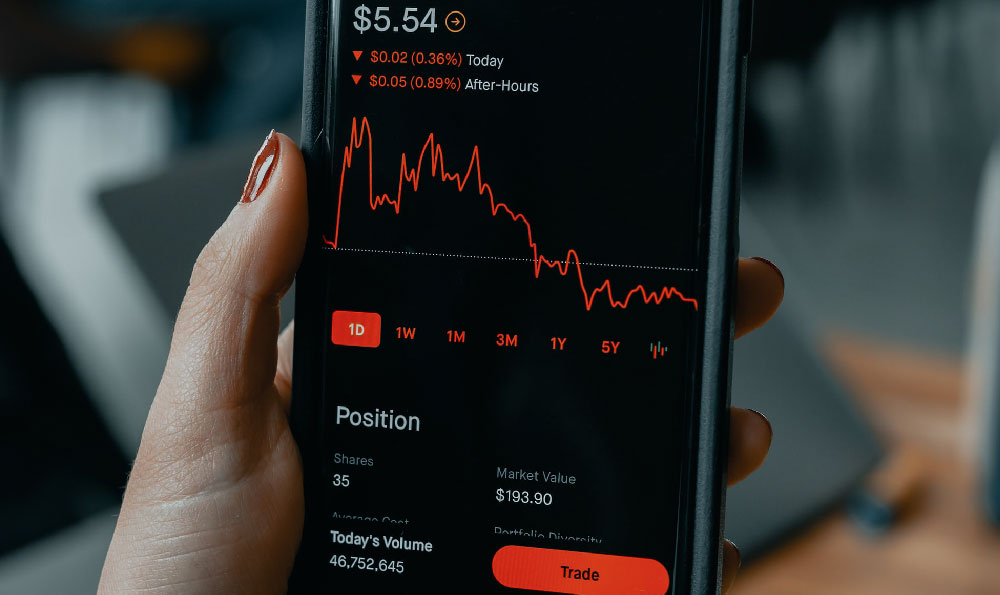Investing in cryptocurrencies can seem like navigating a complex maze. The potential for high returns is alluring, but the inherent volatility and ever-evolving regulatory landscape demand a cautious and informed approach. For those new to the world of digital assets, knowing where to start and what pitfalls to avoid is paramount to achieving long-term financial growth while mitigating risk.
Building a Foundation: Education and Research
Before diving into the cryptocurrency market, dedicate significant time to educating yourself. This isn't just about understanding the basic concepts of blockchain technology and cryptocurrencies; it's about developing a comprehensive understanding of the factors that influence price movements, the different types of cryptocurrencies, and the risks associated with each.

Start with reputable resources. CoinDesk, CoinMarketCap, and Messari offer comprehensive data, news, and research reports. Academic papers and whitepapers from the projects themselves can provide in-depth technical insights. However, be critical of the information you consume. Always cross-reference information from multiple sources to avoid bias and misinformation.
Understanding technical analysis (TA) and fundamental analysis (FA) is also crucial. TA involves analyzing historical price charts and trading volumes to identify patterns and predict future price movements. FA, on the other hand, involves evaluating the underlying value of a cryptocurrency by analyzing its technology, team, market adoption, and overall ecosystem. While neither approach is foolproof, combining both can provide a more holistic view of the investment opportunity.
Crafting a Strategic Investment Plan
Once you have a solid foundation of knowledge, the next step is to develop a well-defined investment plan. This plan should outline your investment goals, risk tolerance, and investment horizon. Are you looking to generate short-term profits, or are you investing for the long haul? Are you comfortable with high levels of volatility, or do you prefer a more conservative approach?
Your investment plan should also include a clear strategy for asset allocation. Diversification is key in the cryptocurrency market. Don't put all your eggs in one basket. Instead, consider spreading your investments across multiple cryptocurrencies with varying market capitalizations, use cases, and risk profiles. A common strategy is to allocate a larger portion of your portfolio to established cryptocurrencies like Bitcoin and Ethereum, while allocating a smaller portion to altcoins with higher growth potential but also higher risk.
Dollar-cost averaging (DCA) is another strategy that can help mitigate risk. DCA involves investing a fixed amount of money at regular intervals, regardless of the price of the asset. This helps to smooth out the volatility and reduce the risk of buying high and selling low.
Navigating the Minefield: Avoiding Common Pitfalls
The cryptocurrency market is rife with scams and schemes that can quickly wipe out your investment. Being aware of these pitfalls is essential for protecting your capital.
Pump-and-Dump Schemes: These schemes involve artificially inflating the price of a cryptocurrency through coordinated buying activity, followed by a rapid sell-off that leaves unsuspecting investors holding worthless assets. Be wary of cryptocurrencies that experience sudden and unexplained price spikes, especially if accompanied by aggressive marketing campaigns on social media.
Rug Pulls: A rug pull is a type of scam where developers abandon a project and run away with investors' funds. This often happens in the decentralized finance (DeFi) space, where new projects are launched frequently. Before investing in a DeFi project, thoroughly research the team, the project's code, and the security audits it has undergone.
Phishing Attacks: Phishing attacks involve tricking individuals into revealing their private keys or other sensitive information. Be suspicious of unsolicited emails or messages that ask for your personal information, and always verify the authenticity of websites before entering your credentials.
Ignoring Security: Security is paramount in the cryptocurrency world. Always use strong passwords, enable two-factor authentication (2FA) on your accounts, and store your cryptocurrencies in a secure wallet. Hardware wallets, also known as cold wallets, are considered the most secure option as they store your private keys offline.
FOMO (Fear of Missing Out): FOMO can lead to impulsive and irrational investment decisions. Resist the urge to chase after the latest hype and stick to your investment plan. Remember, there will always be new opportunities in the cryptocurrency market.
Emotional Trading: Emotions can cloud your judgment and lead to poor investment decisions. Avoid trading based on fear or greed. Instead, stick to your plan and make rational decisions based on your research and analysis.
Staying Informed and Adaptable
The cryptocurrency market is constantly evolving. New technologies, regulations, and market trends emerge frequently. To stay ahead of the curve, it's crucial to stay informed and adaptable.
Continuously monitor news and developments in the cryptocurrency space. Attend industry events, join online communities, and follow reputable experts on social media. Be prepared to adjust your investment strategy as the market changes.
Conclusion
Investing in cryptocurrencies can be a rewarding experience, but it requires a significant amount of knowledge, discipline, and caution. By educating yourself, developing a strategic investment plan, and avoiding common pitfalls, you can increase your chances of success and achieve your financial goals. Remember, investing is a long-term game. Stay patient, stay informed, and stay disciplined, and you'll be well on your way to building a successful cryptocurrency portfolio.












